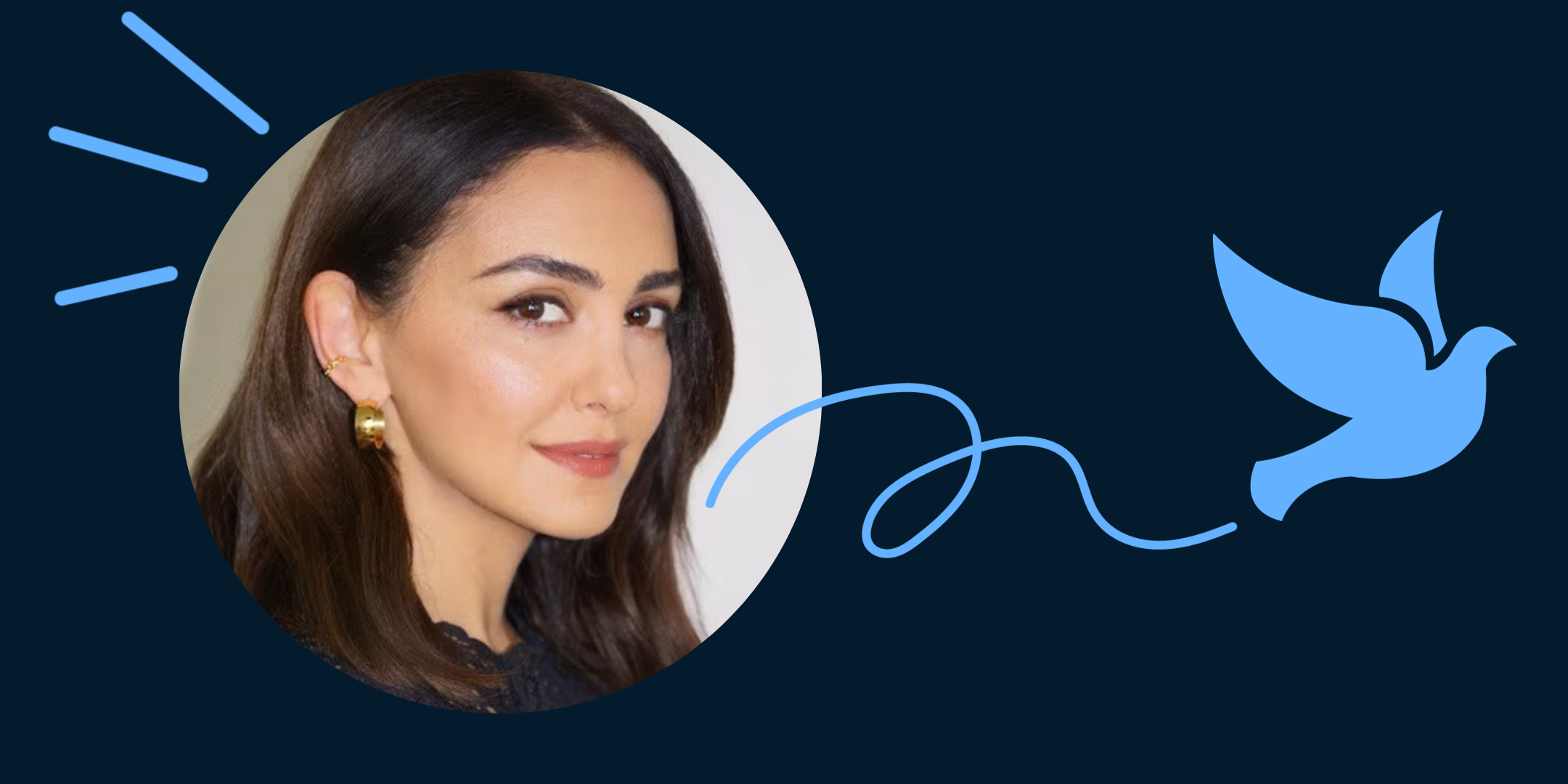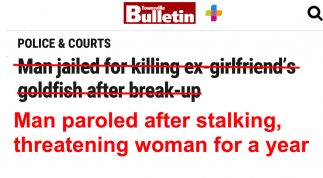This year, the Sydney Peace Prize was awarded to Nazanin Boniadi, an Iranian-American actress and human rights activist. In the last 15 years, Nazanin Boniadi has continuously used her platform as a professional actress, requesting the international community to open their eyes to human rights abuses in Iran caused by the Islamic Republic. This award helps the voice of Iranian protest to be heard outside the country’s borders.
Since the beginning of the Jina Revolution in 2022, Nazanin Boniadi’s activist work took a more specific direction. She went so far as to become a member of the Six-Member Opposition Coalition for a while. Although she voluntarily left the Coalition, today she continues her struggle against the Islamic revolution in Iran by fighting shoulder-to-shoulder with people in Jina’s Revolution.
The Jina movement in 2022 showed us that the 44-year oppression of Iranian women, at the cost of their blood and torture, is coming to an end, and women are singing the song of freedom, hand in hand with men: women, life, freedom. But is victory that simple?
The obvious answer is a big NO. The power of ignorance and darkness of the mullahs has reached its peak. 44 years of looting oil and gas income (Iran is the third largest source of oil and gas in the world), metals (Iran ranks fifth in copper and seventh in steel production in the world), caviar (the best and first in the world), Persian carpet (the best in the world) and so on, has expanded the financial and military power inside Iran, and throughout the Middle East, China, and North Africa. It has reached a point where we see Chinese and African mullahs on the streets of Iran. (Of course, this shows the influence of the regime’s money, not the faith of Chinese and African people.)
Although the Jina Revolution established itself at the cost of blood, torture, and harassment of thousands of people, and was recognised in the world as the world’s first women’s revolution, it had unparalleled achievements up to this point:
- After four decades of repression, women came to the frontline of the struggle based on their clear demands and stood against the mercenaries of the regime.
- Iranians within every political, ethnic, and religious spectrum worldwide sympathised, were united and joined the front against the regime.
- Countless women removed the compulsory hijab, despite the risk to their lives, jobs, and social status.
- Many people from the Gray Stratum (a stratum of society that never involved themselves in political and social issues) finally clarified their political position and joined the people.
- Many supporters of the regime gave up siding with the regime and joined the ranks of the people or secretly fled the country (generally to Canada and Australia).
Even though the Jina revolution brought great achievements up to this point, it also faced great obstacles on its way to progress. The first and most natural enemy of this people’s revolution is the Islamic Regime in Iran. The second obstacle is the powerful countries in the region: China, Russia, and Saudi Arabia. The third obstacle is the Western countries, which see their commercial and political interests in the disturbed Middle East and Iran.
Since the street protests in big cities subsided, the regime has adopted several tricks and policies to suppress and intimidate the people, which are much more violent and anti-Iranian than ever, including:
- Widespread execution of protesters.
- Passing new and harsher laws against protesters (such as arresting women while driving and impounding their cars, or heavy and long prison sentences).
- Mass poisoning of girls’ schools that participated in anti-regime demonstrations (using water and gas).
- The creation of Hijab-Baan Group (a group of armed men and women to fight against women with no mandatory hijab in metro stations). This group is newly established and is different from the morality police who arrest women in the city for not observing the mandatory hijab.
- Opening doors for Muslim fundamentalists from Afghanistan, Iraq and Palestine to enter the country without visas. In doing so, they pursue two goals: first, to create more inflation, increase crime, mix the Iranian race and ethnicity with the Arabs, and destroy the national culture. They intend to reduce the concentration of the national identity of the people by weakening the Persian language, which is one of the important elements of our national identity, with the imported Arabic language. Their second use is in militia groups. These militia groups are used against inside demonstrations as well as in cross-border operations. The regime had previously used Afghans for the Fatemiyoun Militia group.
- More looting of national museums and pre-Islamic antiquities with the intention of humiliating Iranians and more theft of national property (it is interesting to know that the Minister of Cultural Heritage is also the Manager of Public Toilets. What could be more humiliating for our pre-Islamic heritage than this?!)
- The beginning of a new round of academic expulsion and replacing them with mullahs and religious mourners.
- The beginning of a new round of mullah-making of Africans, Chinese, and Afghans with financial support and high wages.
- Excessive employment of mullahs in schools instead of teachers.
- The beginning of a new round of Chain Murders of opposition intellectuals (the killing of dissidents and thinkers by the direct orders of the security forces).
And these are just things that can be seen in society. Certainly, the regime has implemented many other hidden programs and plans.
With a brief look at the achievements of the Jina Revolution and the cruel reactions of the regime, we realise the importance of the activity and unity of Iranians inside and abroad, and also the importance of prizes such as the Sydney Peace Prize in broadcasting to the world the forces at work in Iran Just as Nazanin Boniadi is trying to make the voice of the Iranian people’s protest heard by the world and ask the governments to take sides with the Iranian people, the rest of the Iranians inside and outside the country will continue their struggle until the day, achieve democracy. As our great poet, Nezami, says, the end of the dark night is white.
 Shokoofeh Azar is an Iranian-Australian journalist and writer. After being arrested and imprisoned for journalistic activities in Iran, she became a refugee in Australia in 2010. She has been working primarily as a fiction author, in a magical realism style, albeit with social-political overtones and on the base of true stories, since she moved to Australia.
Shokoofeh Azar is an Iranian-Australian journalist and writer. After being arrested and imprisoned for journalistic activities in Iran, she became a refugee in Australia in 2010. She has been working primarily as a fiction author, in a magical realism style, albeit with social-political overtones and on the base of true stories, since she moved to Australia.
Azar began her first novel, The Enlightenment of the Greengage Tree, in 2012 and published it in 2017 by Wild Dingo Press to great acclaim. This novel has already been published in 12 languages, including French, Italian, Arabic, Japanese, and Chinese. She recently completed her second novel, The Gowkaran Tree in the Middle of Our Kitchen, which will be published by Europa Editions in the United States, England, and Canada in late 2024 and simultaneously in Italy by Edizioni E/O and in Australia and New Zealand by Allen & Unwin. She is now planning for her third novel, Mona and Her Abandoned Tree, about the suppression of Iranian women under the protection umbrella of Sharia Law.

